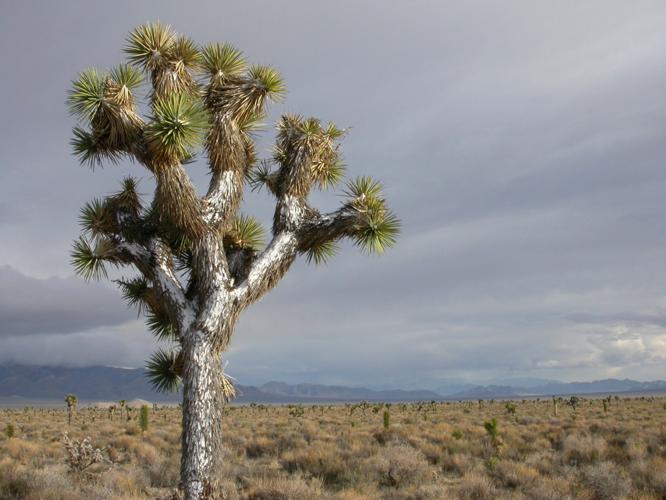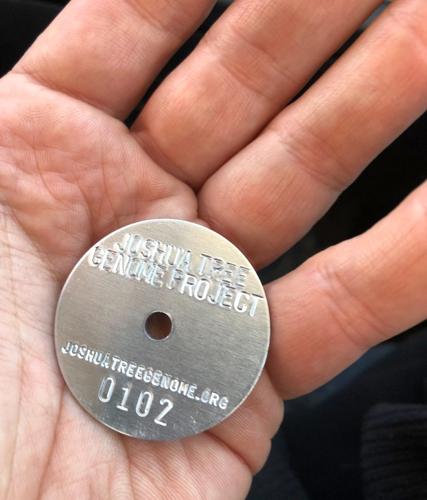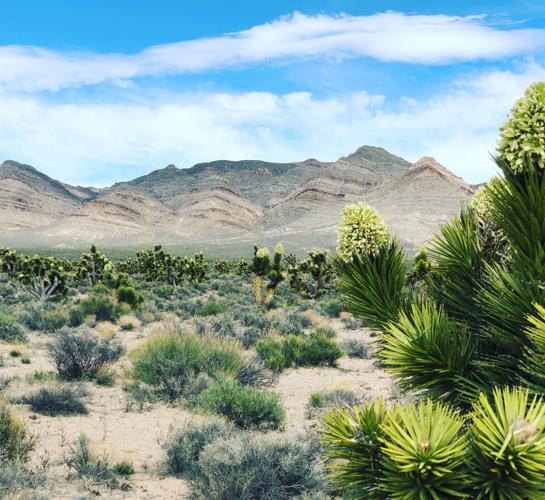Christopher Smith grew up in the shadow of saguaros, only to become one of the world’s leading authorities on the iconic plant of a different desert.
The Tucson-raised University of Arizona graduate has spent the past 17 years researching Joshua trees, those spiky, Dr. Seussian sentinels of the Mojave.
Now Smith is about to embark on the largest and most comprehensive study of Joshua trees undertaken, thanks to more than $1.5 million in grants from the National Science Foundation.
The Joshua Tree Genome Project, as the effort is known, seeks to map the plant’s entire genetic code and unlock its secrets to survival under extreme conditions made worse by climate change.
“I have a lifelong interest in the desert that came from growing up just a 15-minute walk from Finger Rock Trail,” Smith said.
The evolutionary ecologist, now 46, remembers moving to Tucson from Ohio in 1979, just before he started kindergarten. “I felt like I had landed on Mars,” he said.
He used to run down to the wash in his Catalina Foothills neighborhood to explore the desert and collect plants. “A lot of them, I recognize now, were weeds,” Smith said with a laugh.
A moth and a tree connected across time
After graduating from University High School, he studied biology at the UA and briefly worked at Biosphere 2 north of Tucson, back when Columbia University operated the place. He earned his doctorate from Harvard in 2003.
Smith’s early work focused on yucca plants in isolated desert mountain ranges known as “sky islands” and the cactus longhorn beetle, a strange flightless bug that feeds on prickly pear and cholla in northern Mexico and the Southwestern U.S.
Then he met renowned evolutionary biologist Nils Olof Pellmyr, who steered him toward the fascinating bond between Joshua trees and the highly specialized yucca moths that live on them.
It’s a textbook example of what’s known as coevolution. The moth is the Joshua tree’s only pollinator, and the tree is the birthplace and sole source of food for the moth’s young. Neither creature would exist without the other.
“The moths are evolving in response to the trees, and the trees are evolving in response to the moths,” said Smith, now an associate professor of biology at Willamette University in Salem, Oregon.
And unlike some insects that spread plant pollen from place to place by accident, these moths do what they do on purpose.
Joshua trees produce no nectar and very little pollen, so the moths have developed a special “tentacle” in their mouths, unlike anything else found in the insect world, to collect that pollen and deposit it in just the right place to make fruit.
“It’s very, very strange for an animal to have a unique appendage,” Smith said. “It’s like going to the Amazon and finding a dog with two extra legs that it’s using as hands.”
The moths will later deposit their eggs in the fruit they helped to make, so their larvae can feed on a few of the seeds inside.
Warming could mean no country for young trees
Joshua trees come in two distinct types, each inextricably tied to its own specific kind of yucca moth. The eastern variety of the plant —the type found in Arizona, Utah and parts of Nevada — tends to be shorter and more shrub-like, with branches that grow closer to the ground. The western variety looks more like a tree, with a tall trunk giving way to a tangle of spiky arms.
The two are “about as different as coyotes are from wolves,” Smith said. “These days we’re leaning toward calling them different species.”
Smith began his study of Joshua trees by traveling across their entire range in search of the ideal spot for field research. The journey took him everywhere plants grow — from the Southern California desert to Southern Nevada, Southwestern Utah and Western Arizona.
Along the way Smith noticed a troubling trend, something also documented by other desert researchers: In some places, including parts of Joshua Tree National Park, there were no young or middle-aged trees, only older ones.
“They’re just not making babies,” he said.
He had stumbled across some of the first known casualties of climate change — or maybe something worse: the beginnings of a slow-motion extinction.
Smith eventually found the perfect outdoor laboratory for studying the species: a lonesome patch of desert about 150 miles northwest of Las Vegas, near the road to the top secret military installation known as Area 51.
Nevada’s Tickaboo Valley is one of the only places on Earth where the eastern and western varieties of the plant overlap. Smith has conducted field work there every year since 2004, sampling some 5,000 trees and conducting experiments using both varieties and their mated moths.
Project includes gardening, gene mapping
This is Smith’s fourth National Science Foundation grant and by far his largest.
“It was a big surprise,” he said. “We’ve been trying to get this for a long time. We had a couple of near misses.”
The money will fund a four-year project that includes a comparative genetic analysis of the species across the Southwest, the ongoing collection of flowers and moths from a wide range of locations, and the development of experimental Joshua tree plots in desert test gardens at various elevations and climate zones.
Smith said there will also be an outreach component, most likely involving minority and low-income students from the Los Angeles Unified School District, in hopes of attracting fresh faces to the world of scientific research.
But the main thrust of the study involves mapping the species’ genetic code.
The Joshua Tree Genome Project actually began in 2016 with a nationwide collaboration of scientists and a crowdfunding campaign that raised about $10,000 from desert plant enthusiasts.
Reassembling “Hamlet” from shredder scraps
The work has been slow-going so far, in part because it is hard to get good DNA samples from Joshua trees. So hard, in fact, that Smith has set aside old college rivalries to enlist the help of some specialists at Arizona State University. “They run a lab where they do just that: They get DNA out of plants,” he said.
Joshua trees have a genetic code that is every bit as large and complicated as the one for humans, so figuring out what all the pieces mean will be difficult.
“I describe it as taking the complete works of Shakespeare and feeding it through a shredder and then trying to reassemble ‘Hamlet’ from the scraps,” Smith said.
Luckily, sequencing DNA has become a lot faster and cheaper in the two decades since the Human Genome Project, which required about 13 years and $3 billion.
By the end of their project, Smith and his team hope to have genetic sequences for both the eastern and the western Joshua trees, all at a cost well under $50,000.
The researchers also hope to learn how genes passed down over millions of years have helped the plant survive through previous periods of climate upheaval.
Lessons learned could apply to other deserts
Smith is directing the work alongside Jeremy Yoder, a biologist and professor at California State University Northridge. Their team includes researchers from the U.S. Geological Survey, the University of Alabama, the University of Georgia and the University of Hawaii-Manoa.
Yoder said the project could help protect Joshua trees from the worst effects of climate change by identifying which populations are at the greatest risk and which ones have the genes they need to adapt.
“As evolutionary biologists, we’ve started from a fascination with the deep history of Joshua trees and the traits that make them special,” he said, “but learning about those traits may also help us ensure that the trees have a future.”
Smith expects their findings to guide specific decisions about how land is used and how conservation money is spent in Joshua tree country. Once land managers know which stands of trees are most likely to survive for the next 100 years, they can make informed choices about where to let developers build that new solar farm outside Las Vegas or that new Walmart in Barstow, California, he said.
Study collaborator Karolina Heyduk, a professor and plant physiologist at the University of Hawaii-Manoa, hopes what they learn about Joshua trees will also apply to other plants and animals in other deserts.
“I think we’re going to start to better understand the nuances of desert adaptation through this work, and what that means for species’ survival under climate change,” Heyduk said.
Including, perhaps, the saguaros of Smith’s youth.










